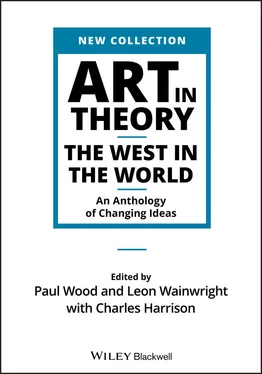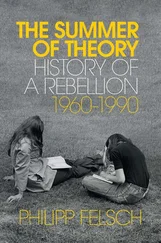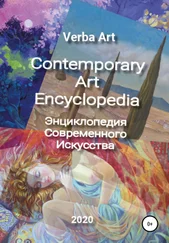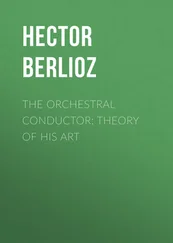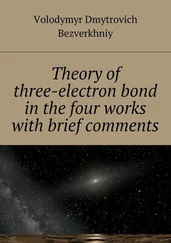There is a tendency in much contemporary thought influenced both by Postmodernism and by post‐colonialist theory to either minimize or abrogate altogether that distinction between the material and representational dimensions; in effect to regard the Enlightenment as a sort of ideological camouflage for imperialism. By the same token, the Enlightenment’s typical supposition of the universal applicability of its sense of the capacities of humankind is widely seen as a mask for the interests of a particular section of humanity, namely bourgeois – or otherwise ruling‐class – European men. This is not the position of the present anthology. While no one working in the contemporary period can fail to take on board the force of post‐colonialist ideas, nor to ignore the critique of the universalizing pretensions of the Enlightenment couched in terms of an acknowledgement of difference, nonetheless it is to court the most barren reductivism to assimilate science and the humanities to military and commercial adventurism without acknowledging some measure of their relative autonomy.
By the same token, though, it is easy for contemporary self‐appointed defenders of Enlightenment values to slip into a Panglossian inability to admit the many bad things that have come from it, as well as an equivalent inability to recognize the many good things that can proceed from rejecting unconstrained rational ism . Again, that is not the position from which the selections in the present anthology have been made. Criteria of testability and rational argument seem to be little short of the bedrock of a modern, secular civilization. But the separation of fact and value can scarcely be said to have survived intact a critique rooted in a sense of the ease with which values, as well as interpretations of ‘facts’, are pervaded by material interest and the operation of power. We have tried to resist the siren song of a tendentious diminution of all things European, even as we have also tried to maintain due scepticism for the unthinking export of ‘Western values’ – or what normatively passes for them – in the fissured contemporary conjuncture. We have, in sum, attempted to represent in as even‐handed a form as we have been able, both the rough and the smooth of eighteenth‐century European thought about the cultures of other parts of the world with which Europeans came into contact in that extraordinarily dynamic period.
Divided into three thematic sections, Part II continues the format of Part I. These sections maintain the emphases of the earlier period, but with slightly different inflections. Thus the third section of Part II directly continues the focus of the third section of Part I: reflections of armchair thinkers based in Europe during the period of the emergence of the modern academy. Sections IIA and IIB are, however, organized slightly differently from IA and IB, though again on the basis of a geographical distinction.
The first section concerns the European encounter with the diversity of the Orient, mixing together two different registers: imaginative and scientific. In this connection, it is important to note that although Edward Said’s famous account of ‘Orientalism’ (understood as the systematic ideological construction of the image of a subordinate culture rather than a factual account of a geopolitical entity) situates its beginnings in the final decades of the eighteenth century, its principal focus is on the nineteenth, and hence Said’s strictures bear upon Parts IIIand IVof the present volume rather more than this one.
This is perhaps also the place to note an important distinction concerning the construction of European knowledge about the wider world. Said’s account of Orientalism, and that of many post‐colonialist writers following him, applies most securely to the period of the ascendancy of the modern colonial empires, especially the British and the French, after the mid‐eighteenth century. Part Iincluded a wide range of considerably earlier texts concerning European encounters with the East, and also – from the late fifteenth and early sixteenth centuries – with the newly discovered continent of America. Many of those voices emanated from the early modern Portuguese and Spanish empires, and from the reception of their accounts in England and France. Part Itook this story up to the end of the seventeenth century, while Part II addresses the eighteenth‐century European Enlightenment up to the French Revolution. As part of the ongoing process of scholarly debate over the terms of the initial ‘Orientalist’ and ‘post‐colonialist’ challenge to normative European accounts of world history (touched on again in the introductions to Parts IV, VIIand VIII), Benjamin Schmidt has made a powerful case for the existence of a transitional period between the early phase of European encounters with the world and the onset of the period of full‐blown imperialism. This he locates in the approximate century between the end of the European Thirty Years War, signalled by the Peace of Westphalia of 1648 and the Seven Years War of 1756–63. For Schmidt, this is the key period within which a distinctively ‘European’ identity coalesced (or rather, was constructed), and did so moreover against an equally homogenized image of an exotic world, projected onto Asia and America alike.
This binary – and mutually defining – construction of Europe as the norm, and the rest of the world as its exoticised Other, is, on Schmidt’s account, significantly a production not so much of the emergent and expansive British and French imperial blocs as the distinctive Dutch formation. The period coincides with the contraction of the Dutch overseas empire in Brazil, the West Indies and India under increasing pressure from the rise of England, and the shift of Dutch capital into an international mode of the kind described by Arrighi as an ongoing cycle in the development of modernity involving a dialectic between territorial state organizations and more transnational networks. Phases of domination by the latter have been notably conducive to traffic in culture and knowledge as well as in material goods. For Schmidt, it is this period spanning the late seventeenth and early eighteenth centuries in which the parameters for European domination of the world become articulated at the level of representation – both visual and verbal. This dense conjunction of travellers’ tales, early natural science and proto‐anthropology extends across the chronological spans of Parts Iand II of Art in Theory: The West in the World . In an anthology without pictures, we are restricted to tracing the development of changing ideas as expressed in words. Our periodization must therefore of necessity be regarded as provisional, and more appropriate to some media rather than others. It is beyond our present scope to represent the specifically visual dimension of this constructed representation of the world across a wide range of artefacts including not only paintings – in such genres as still life and landscape – but also prints, decorated objects and surfaces in both two and three dimensions, such as ceramics and wallpapers, as well as maps and the plates of illustrated books.
This complex matrix of changing representations of the world (at the interactive levels of both (visual) art and (verbal) language) and the flows of power inscribed in economic, military and political relations in the world, is where we can ultimately trace the changing ideas of art with which the present anthology is by definition concerned. Yet that is to say everything and nothing. In the end, we can neither accept traditional accounts in their entirety, or indeed revisions of them in their entirety, but nor can we wish them away. In terms of a conventional history of art and of design, the eighteenth century was long understood in terms of a series of now‐questioned style labels such as ‘baroque’, ‘rococo’, ‘neo‐classicist’, ‘picturesque’ and, most pertinent to the present volume, ‘chinoiserie’. Most of these, it has to be confessed, still linger on in our heads, however much more recent work has insisted on relating the art to deeper sociohistorical trends: absolutism, parliamentary democracy, land enclosures, nascent industrialization and the Seven Years War for global supremacy fought out between Britain and France and their respective allies. Steering a course between these differing emphases, the first section includes examples of both fictional and factual accounts of what made ‘the Orient’ seem different from Europe. These range from pioneering ‘Orientalist’ accounts of Islamic culture by figures as different as Antoine Galland and Lady Mary Wortley Montagu, to the exotic fantasies of the Arabian Nights and William Beckford’s Vathek . A different take on the sense of Eastern ‘difference’ can be found in Montesquieu and Goldsmith: both using fictional oriental characters, Persian and Chinese respectively, to shine a critical sidelight on the corruption and artificiality of their own societies.
Читать дальше
